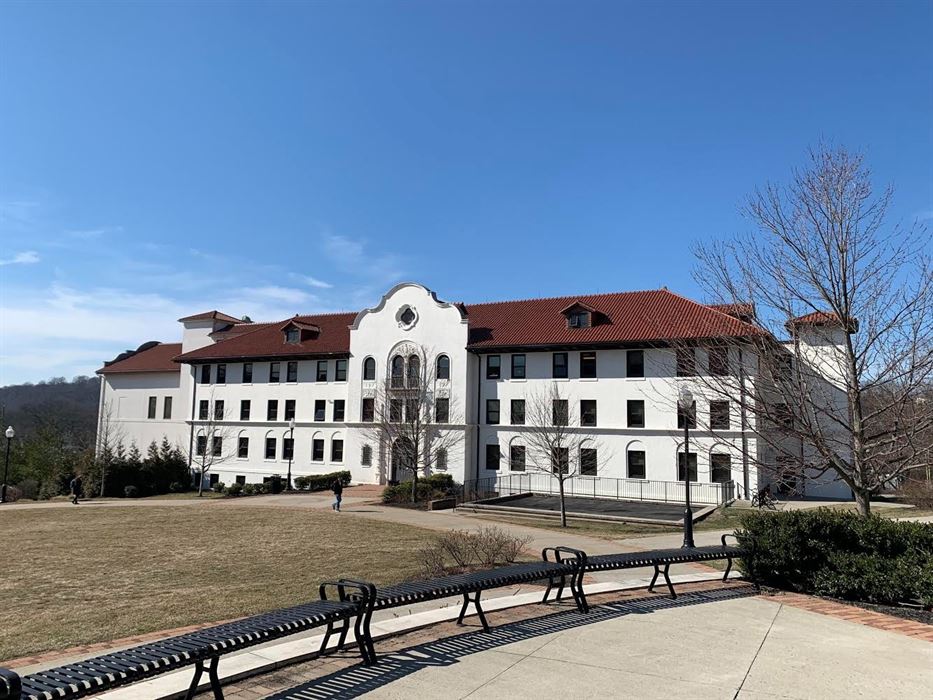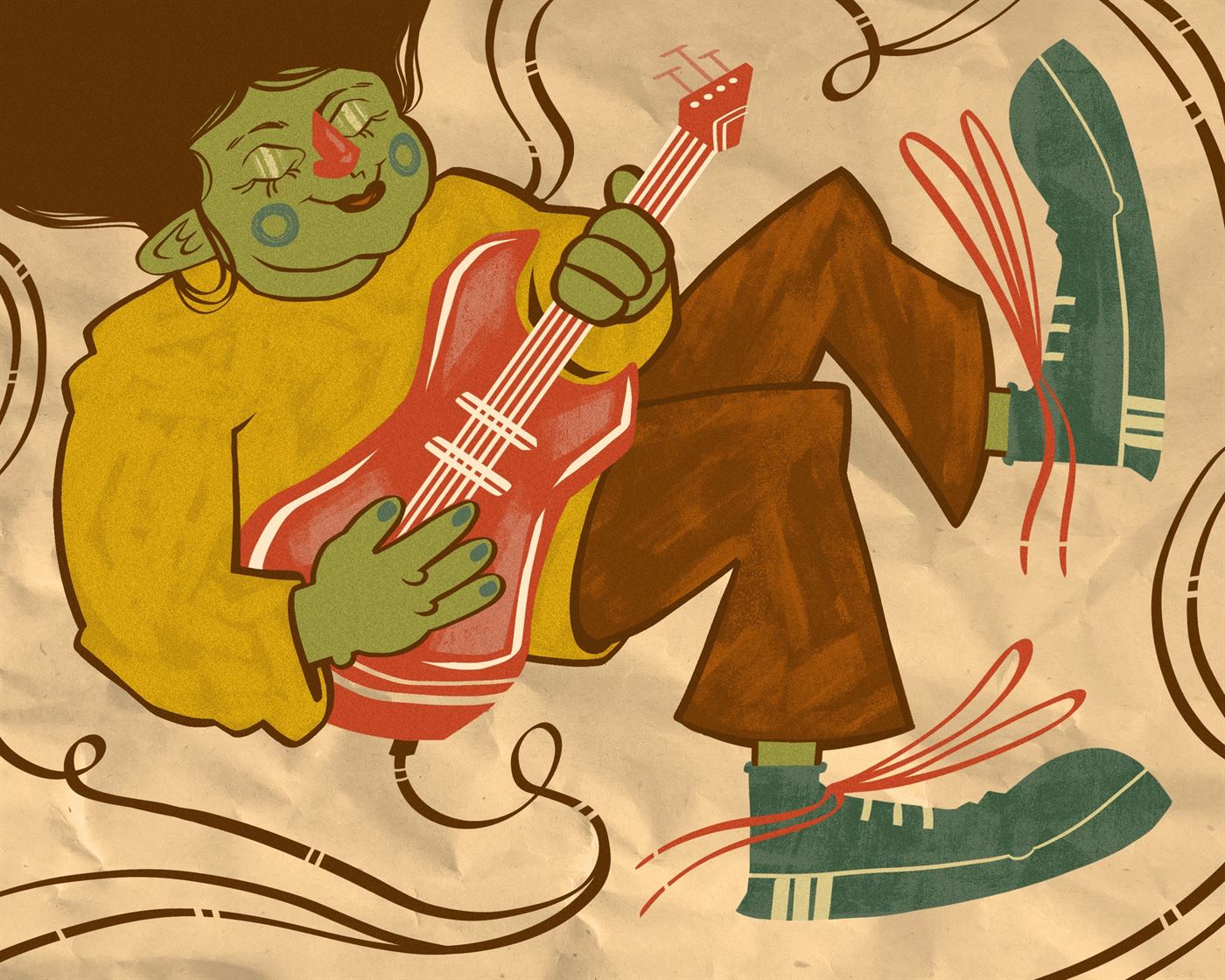My eyelids became heavy and my breathing slowed. Dane Wagner, a senior music therapy major, glided his fingers across the piano keys methodically and his face had a look of concentration. The stress of the school day was lifted as I listened to the soft notes being played. Just as he finished, I finally realized he had been playing an acoustic version of Dance Monkey.
“Okay, so now I’ve just given you one example of how music could be used in a session,” Wagner said.
Wagner did not initially tell me what he was doing, he just put down his bag and began playing the piano. After that experience, I felt relaxed the rest of the day as the high-pitched melodies echoed around my head.

The John J. Cali School of Music at Montclair State University.
Photo courtesy of Kevin Doyle Photo credit: Kevin Doyle
The John J. Cali School of Music at Montclair State University is one of the oldest buildings on campus, yet it offers one of the newest and ever-changing academic programs. Music therapy is an unfamiliar field to most people, but specialized music therapists have been helping and comforting patients since World War II.
According to the Montclair State program, music therapy “consists of practices in which persons work together through music and relationship in order to promote human well-being in its numerous physical, emotional, social and cultural forms, all guided by a qualified music therapist.”
Many people are unaware of the amount of dedication needed to pursue a career in music therapy. Music therapy students are required to take 10 to 12 classes a semester usually only worth one or two credits each.
Since the actual definition of music therapy harbors a variety of thoughts and concepts; there is even a class dedicated to describing what the field is about. The definition continues to change as more research is done.
Wagner is the president of the Music Therapy Student Organization (MTSO) at Montclair State. The club frequently hosts events like open mic nights, where students can support each other and learn from experienced upperclassmen.
“You have to be really passionate about this,” Wagner said. “The people in this program will talk it up all day.”
Students become well-rounded because of the program’s emphasis on three areas: piano, guitar and voice. For example, students normally take four semesters of solely learning how to play piano, depending on their skill level. On top of that, there are music therapy classes specifically designed for piano, like clinical improvisation.
“You have a different appreciation of music learning through all these different dimensions,” Wagner said. “The school trains you to listen in a good way.”

(Left to right) Dane Wagner, Dana Shafranek and Maryann Hurley sitting outside Leshowitz Recital Hall.
Photo courtesy of Kevin Doyle Photo credit: Kevin Doyle
Dana Shafranek, a sophomore music therapy major, is in her second semester of practicum, where she visits a site once a week to observe and lead music therapy sessions. Students learn that each individual has their own specific needs and goals, and finding a clear-cut solution is not an easy feat.
“It’s not always about trying to fix something,” Shafranek said. “You have to realize you’re playing music, which is naturally humanistic. You’re just trying to provide them with a positive experience.”
Different settings can also determine what type of music will be played. Whether the therapist is playing at a nursing home or a school, each person’s needs are taken into account.
Shafranek’s eyes lit up as she discussed the connection between music therapy and people suffering with Alzheimer’s. Carefully composed music can be helpful in recovering certain memories for Alzheimer’s patients.
Alzheimer’s patients may have their family present with them during a session. Therapists will ask the family questions to get to know the patient better like, “What were some of their favorite activities when they were younger?” or “What song did they love?”
“A music therapist can work with babies, children, adolescents, adults and up until death,” Shafranek said. “Music is something that is with you the moment you are born and it’s relevant for all ages.”
While in the field, music therapists focus on four main tenets with clients. They include listening, performing, composing and improvisation. The Montclair State program is designed so all the various concepts and theories build upon one another effectively.
Maryann Hurley, a freshman music therapy major, has been influenced by music her entire life and decided to attend Montclair State specifically for the music therapy program.
“Montclair State has the most all-encompassing and client-focused approach to music therapy,” Hurley said.
With a constant and rigorous workload, Montclair State’s music therapy students are some of the many passionate and dedicated people at this school. There is something special about the give-and-take relationship that music therapists have with their clients. It’s uncommon to find a relationship like that anywhere else on campus.
“Montclair State gives you so much exposure and they kinda just throw you out there into the field,” Shafranek said. “But when you come back, you have so much support from your friends and professors.”



